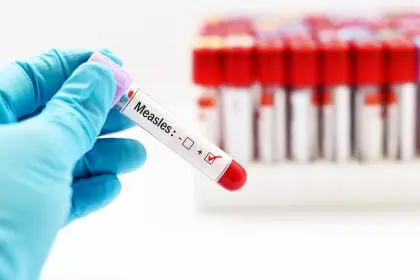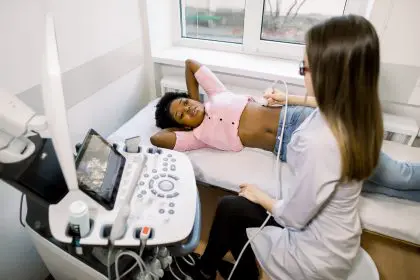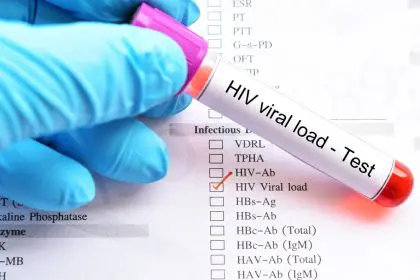Medical researchers have uncovered an alarming trend: throat cancer cases are rising dramatically, and human papillomavirus (HPV) stands as the silent culprit behind this surge. This revelation has sparked concern among healthcare professionals who witness firsthand the devastating impact of delayed awareness and prevention.
A deadly connection emerges
Recent medical data reveals a startling truth – HPV, commonly known for causing cervical cancer, has emerged as a leading cause of throat cancer. This connection, while well-documented in medical literature, remains largely unknown to the public, creating a dangerous gap in health awareness that puts millions at risk.
The pandemic’s devastating ripple effect
When COVID-19 dominated global health discussions, it created an unexpected casualty: routine HPV vaccinations plummeted. This sharp decline in preventive care has left healthcare providers racing against time to address missed vaccinations while battling increased vaccine hesitancy in the population.
Shattering protection myths
A dangerous misconception persists that HPV protection only matters for young adults or those in new relationships. Medical evidence paints a more complex picture. The virus can remain dormant for years or even decades before triggering cancer development, making protection crucial regardless of age or relationship status.
The dangerous gender divide
Historical marketing strategies focused predominantly on women, creating a lethal awareness gap among men. This oversight leaves half the population dangerously uninformed about their cancer risk. Men often discover their vulnerability too late, after cancer has already developed.
Hidden transmission dangers
The insidious nature of HPV transmission creates unique challenges. Unlike many viruses, HPV can spread through various forms of intimate contact, and exposure often occurs without either person’s knowledge. This silent transmission makes universal vaccination critically important for public health.
The testing dilemma
While women benefit from regular screening methods, men face a troubling void in testing options. This lack of routine screening means many men unknowingly carry and spread the virus, complicating prevention efforts and highlighting the urgent need for expanded testing capabilities.
Financial devastation
The economic impact of HPV-related throat cancers extends far beyond individual medical bills. Treatment costs for these cancers significantly exceed prevention expenses, straining healthcare systems and devastating families financially. Insurance coverage for vaccination makes prevention accessible, yet many remain unprotected.
Medical community frustration
Healthcare providers express growing concern over persistent vaccination myths. Despite years of safety data covering millions of doses, misinformation continues to discourage people from seeking protection. This resistance frustrates medical professionals who witness preventable cancers develop in unvaccinated patients.
Cultural barriers
Different cultural attitudes toward discussing sexual health create significant obstacles in HPV prevention. Healthcare providers struggle to navigate these sensitivities while ensuring accurate information reaches all communities. This cultural complexity requires nuanced approaches to health education.
Education evolution
Public health organizations have begun revolutionizing their approach to HPV education. Modern campaigns utilize diverse communication channels, from social media to community outreach, aiming to make crucial information more accessible and less stigmatized.
The family conversation challenge
Medical experts emphasize the importance of open family discussions about HPV prevention. These conversations, while potentially uncomfortable, play a crucial role in protecting future generations. Parents who understand the risks can better advocate for their children’s health.
Workplace wellness revolution
Progressive companies have started incorporating HPV awareness into their wellness programs. This corporate support helps reduce stigma and improves access to vaccination and information. Workplace education reaches adults who might otherwise miss vital health information.
Primary care battleground
Family doctors and primary care physicians stand at the forefront of HPV education. Their trusted position allows them to address concerns and provide personalized recommendations. These healthcare providers play a crucial role in increasing vaccination rates.
Research horizons
Ongoing medical research continues to uncover new aspects of HPV’s relationship to throat cancer. Scientists work to develop improved testing methods, particularly for men, while exploring enhanced protection strategies. These efforts offer hope for better prevention options.
Prevention strategies
Medical experts recommend several critical steps for protection: Immediate consultation with healthcare providers about vaccination eligibility Regular health screenings and checkups Open discussions with partners about HPV prevention Reliance on verified medical sources for information
The vaccination imperative
Understanding the vital role of vaccination in preventing throat cancer has never been more crucial. The current generation has the opportunity to significantly reduce future cancer rates through widespread vaccination adoption.
Breaking the silence
Reducing stigma around HPV discussion remains crucial for improving prevention rates. Open dialogue about this common virus helps people make informed decisions about their health and encourages others to seek protection.
Future implications
Without increased awareness and prevention efforts, medical experts predict a continued rise in HPV-related throat cancers. This projected increase underscores the urgent need for improved education and vaccination rates.
The battle against HPV-related throat cancer requires coordinated effort from healthcare providers, public health officials, and individuals. By working together to spread accurate information and reduce stigma, we can help protect more people from these preventable cancers.











